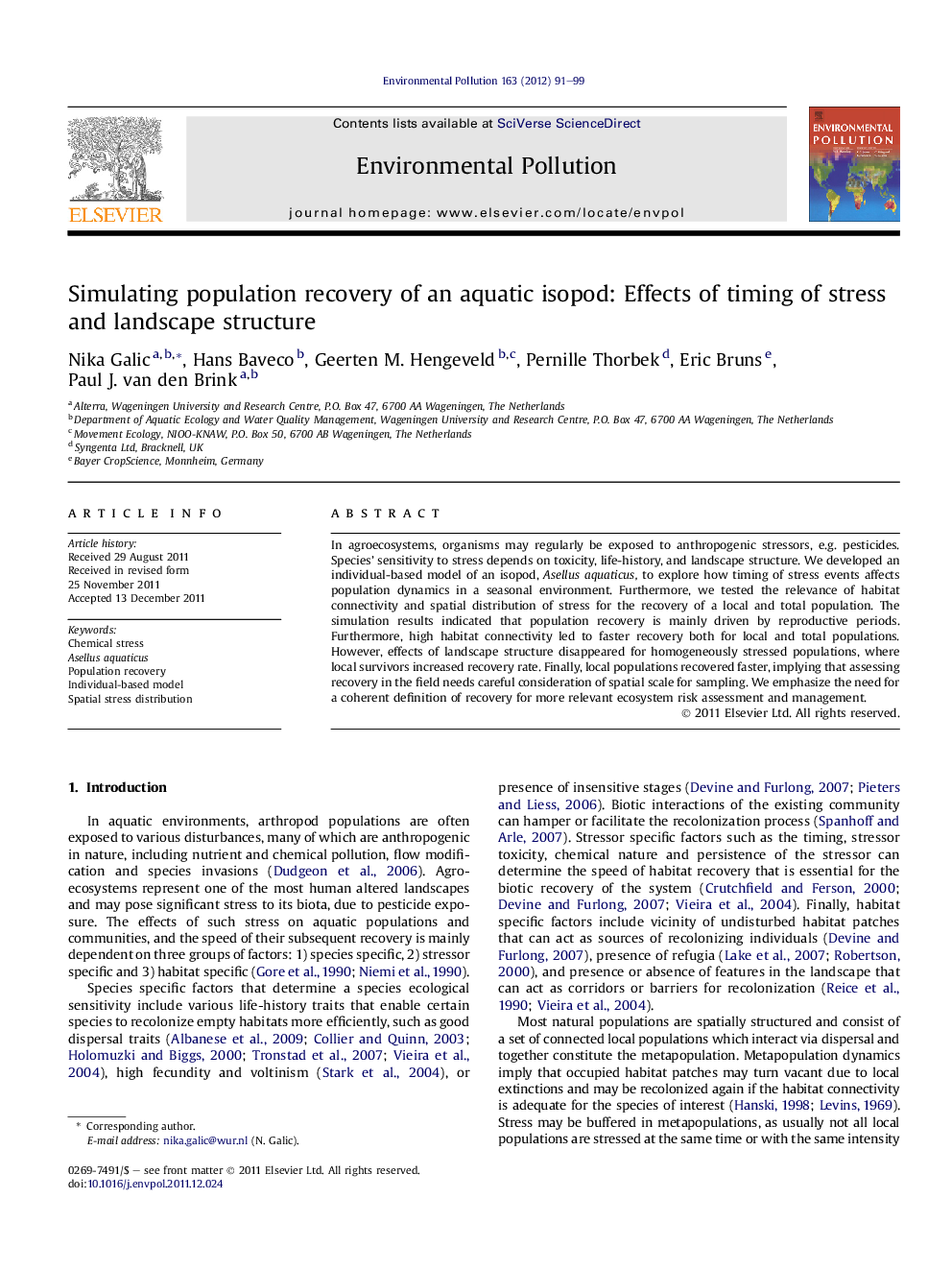| کد مقاله | کد نشریه | سال انتشار | مقاله انگلیسی | نسخه تمام متن |
|---|---|---|---|---|
| 6318509 | 1619209 | 2012 | 9 صفحه PDF | دانلود رایگان |

In agroecosystems, organisms may regularly be exposed to anthropogenic stressors, e.g. pesticides. Species' sensitivity to stress depends on toxicity, life-history, and landscape structure. We developed an individual-based model of an isopod, Asellus aquaticus, to explore how timing of stress events affects population dynamics in a seasonal environment. Furthermore, we tested the relevance of habitat connectivity and spatial distribution of stress for the recovery of a local and total population. The simulation results indicated that population recovery is mainly driven by reproductive periods. Furthermore, high habitat connectivity led to faster recovery both for local and total populations. However, effects of landscape structure disappeared for homogeneously stressed populations, where local survivors increased recovery rate. Finally, local populations recovered faster, implying that assessing recovery in the field needs careful consideration of spatial scale for sampling. We emphasize the need for a coherent definition of recovery for more relevant ecosystem risk assessment and management.
⺠Non-target arthropod population recovery after short-term stress in agroecosystems. ⺠Recovery depends on timing of stress events and is governed by reproductive periods. ⺠Populations recover faster in well connected landscapes. ⺠Time to recovery depends on spatial distribution of stress. ⺠Considering appropriate spatial scale very relevant for assessing recovery.
Journal: Environmental Pollution - Volume 163, April 2012, Pages 91-99